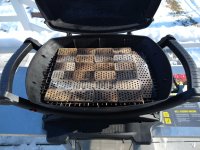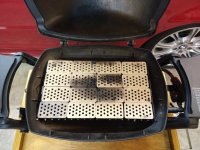Joe Anshien
TVWBB Honor Circle
Hey George,
I really like your modding ideas. Don't take Larry's comments personally and don't let it discourage you from doing it here and posting about it! Once your here long enough you can almost predict his responses to some things. Sometimes I wonder if he would think putting aftermarket wheels on a car is a dangerous mod;-) I believe there are way more dangerous things out there in the world than playing around with your grill. Weber has to design a grill for the masses, and if that does not meet your needs and you want to pimp it out, that is what you do. I think that most people who have been "playing" with gas long enough have a healthy respect for it, and know what they are doing. What is way more dangerous IMHO are the idiots that don't clean their grills and risk grease fires.
I really like your modding ideas. Don't take Larry's comments personally and don't let it discourage you from doing it here and posting about it! Once your here long enough you can almost predict his responses to some things. Sometimes I wonder if he would think putting aftermarket wheels on a car is a dangerous mod;-) I believe there are way more dangerous things out there in the world than playing around with your grill. Weber has to design a grill for the masses, and if that does not meet your needs and you want to pimp it out, that is what you do. I think that most people who have been "playing" with gas long enough have a healthy respect for it, and know what they are doing. What is way more dangerous IMHO are the idiots that don't clean their grills and risk grease fires.


